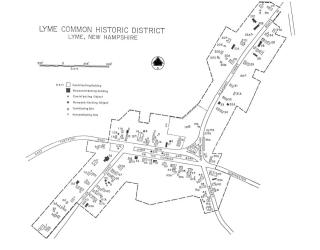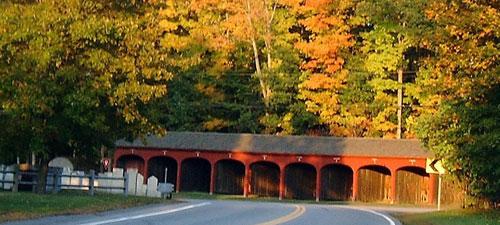Heritage

As Lyme enters the twenty-first century, one striking feature of this small town on the big river glows more brightly than ever: reverence for its heritage. Decades ago, Lyme was in the forefront of a new movement to conserve its natural heritage, and remains so to this day. Much land of statewide significance has been protected throughout the town, ensuring that the town will still be recognizable to its children years from now, and that good soil will still be available for food production. Despite its small size, the town has taken a statewide leadership role in protecting its agricultural heritage with one of New Hampshire’s first farmland protection projects, and most recently with an effort to preserve historic barns.
Lyme is also blessed with a rich inventory of historic architecture, and its citizens with the instinct to respect and care for it. Before historic preservation caught on elsewhere, Lyme people were working together to restore the historic horse sheds behind the Congregational Church. The row of twenty-seven sheds standing today is the longest line of contiguous horse sheds in New England, and possibly in the United States.
Both of Lyme’s early nineteenth century churches have been the subject of dedicated historic preservation campaigns, and when a new school was needed in the 1990s, the community elected to retain the 1912 schoolhouse and build anew inside and around it. The 1839 Lyme Center Academy saw two waves of dedicated restoration work that earned a statewide award. The Academy is now home to the extensive collection of the Lyme Historians, the town’s energetic historical society. Private homeowners have also restored homesteads throughout the town. Despite fires and other changes through the years, the Common remains ringed with the handsome evidence of Lyme’s history.
Lyme Common Historic District.


